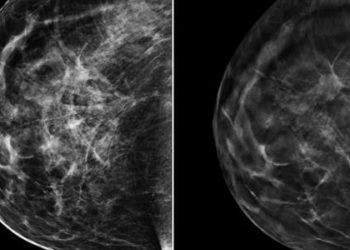Gender differences in academic achievement exist in medicine
1. This study found that women were less likely than men to be full professors, have first and last author publications, and have funding from the National Institutes of Health.
2. Hematology/oncology and radiology were the only two fields without gender differences in full professorship. The greatest differences existed in gastroenterology and infectious disease.
Evidence Rating Level: 2 (Good)
Study Rundown: The number of women in medical schools has been increasing over the last several decades. This study examined the differences between men and women with regard to academic achievement in medicine. Data was extracted from a database maintained by Doximity and was validated in a subpopulation of individuals. Women were less likely than men to be full professors. Female physicians were most commonly in internal medicine, obstetrics and gynecology, and pediatrics. Women were less likely to be first or last author on publications and were less likely to have National Institutes of Health funding. The only specialties without significant differences in full professorship between women and men were hematology/oncology and radiology. In comparison to hematology/oncology, the fields with the greatest gender disparities in full professorship were gastroenterology and infectious disease.
The inclusion of all physicians registered in the 2014 AAMC faculty roster and the validation of data from Doximity are two strengths of the study. The cross sectional study design and the use of National Institutes of Health funding as a surrogate for research productivity are two important weaknesses of the study. Ultimately, this study shows that while there are increasing numbers of women in medicine, important disparities between sexes in academic achievement still exist.
Click to read the study, published today in JAMA
Click to read the editorial, published today in JAMA
Relevant Reading: Gender differences in academic productivity and leadership appointments of physicians throughout academic careers
In-Depth [cross-sectional study]: This study utilized validated data from Doximity to compare academic achievement in medicine between women and men. Women were less likely than men to hold the rank of full professor (11.9% vs 28.6%, absolute difference -16.2%, 95% CI -17.3%- -16.2%). Women and men were similarly represented at institutions ranked highly for research, but women had fewer first and last author publications (difference -7.8, 95% CI -8.1- -7.5). Women were also less likely than men to have funding from the National Institutes of Health (difference -3.5%, 95% CI -3.9%- -3.1%). The fields of hematology/oncology and radiology were the only two without statistically significant differences in full professorship between women and men. The fields with the greatest differences in full professorship between women and men were gastroenterology (p=0.06, compared to hematology/oncology) and infectious disease (p<0.001, compared to hematology/oncology).
Image: PD
©2015 2 Minute Medicine, Inc. All rights reserved. No works may be reproduced without expressed written consent from 2 Minute Medicine, Inc. Inquire about licensing here. No article should be construed as medical advice and is not intended as such by the authors or by 2 Minute Medicine, Inc.







